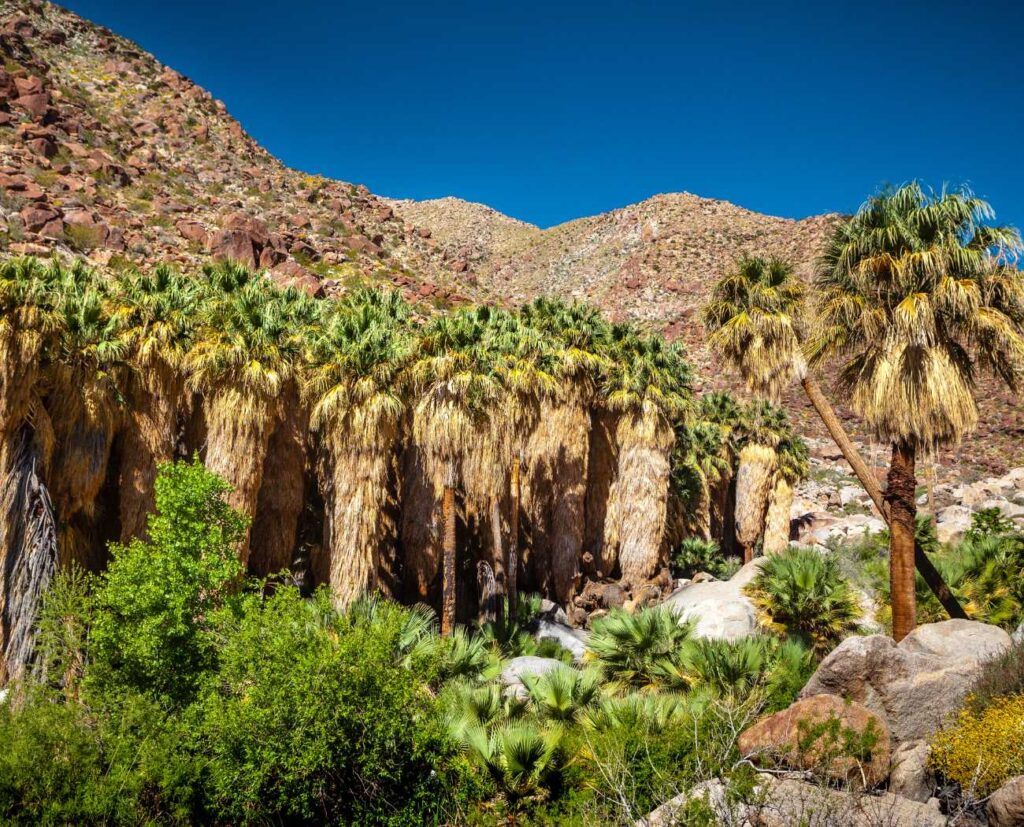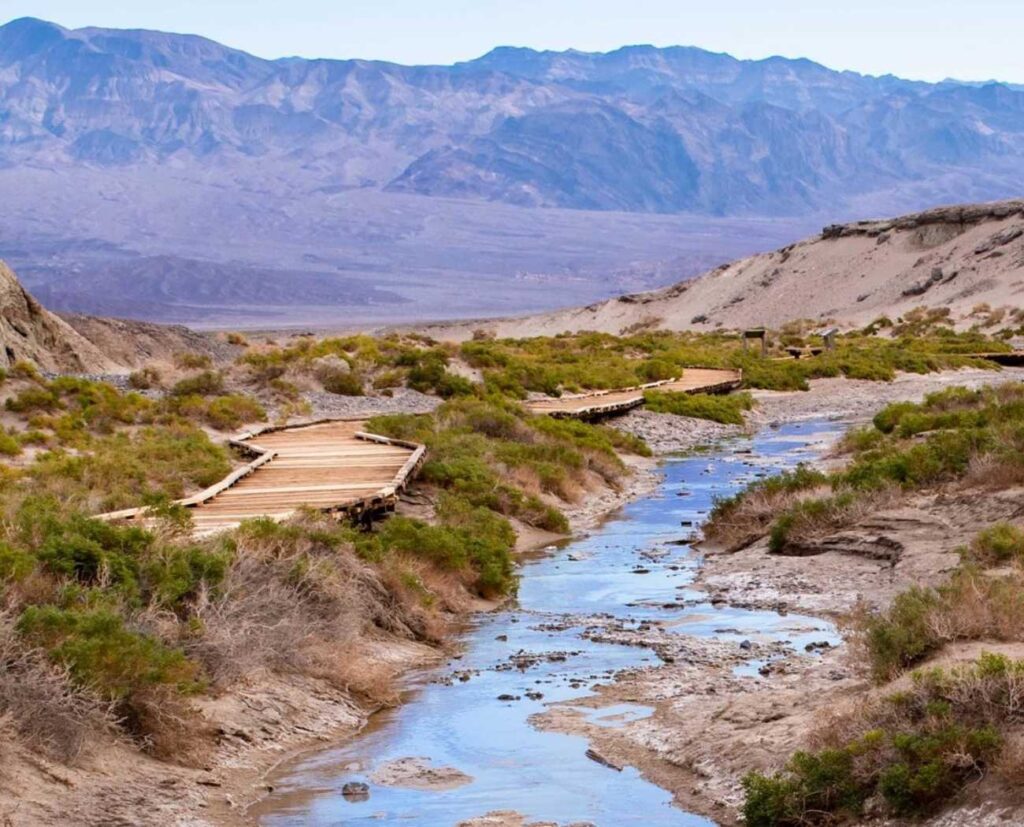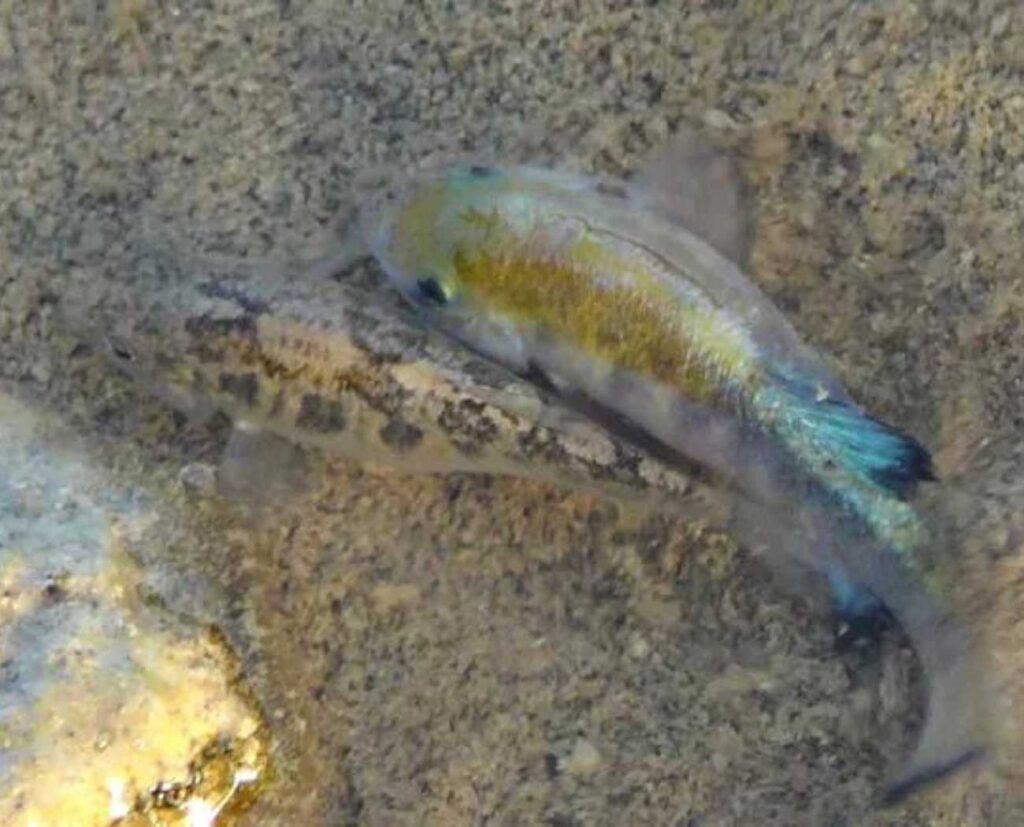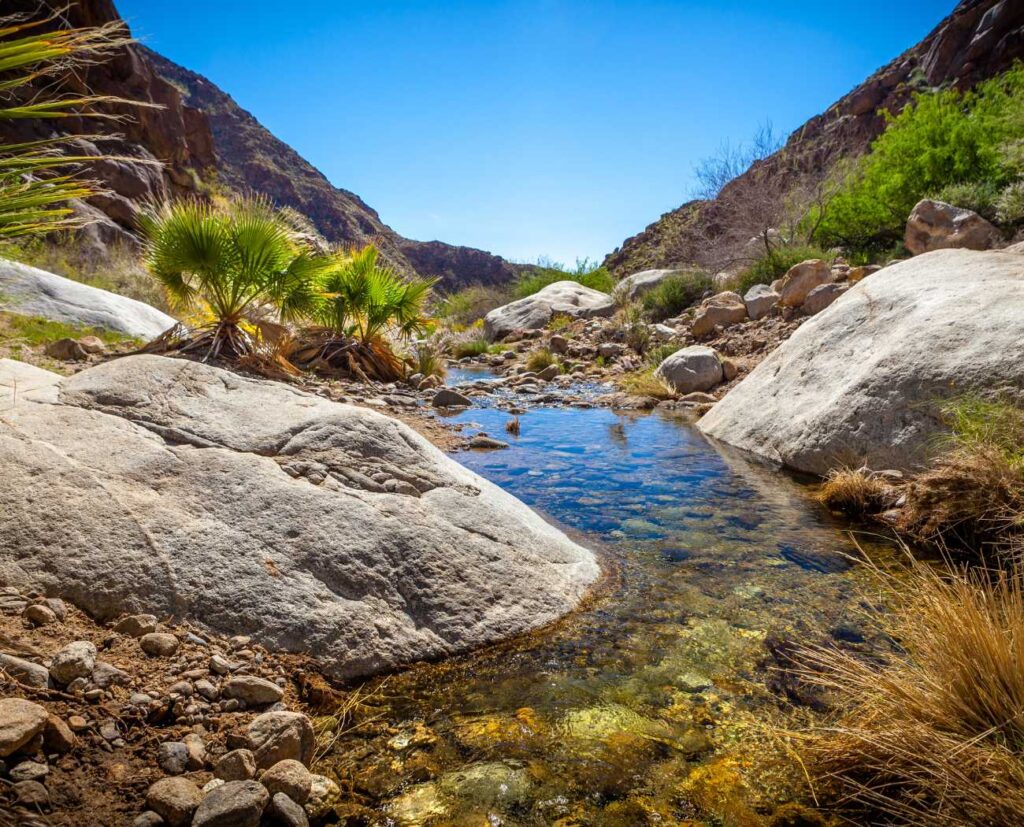Lifelines in the Desert Wilderness
In the heart of some of America’s most arid landscapes lie unexpected havens – oases. These natural retreats, where life-giving water defies the barrenness, are not just sources of hydration but also vibrant hubs of biodiversity and cultural heritage. Springs vary in size, from small seasonal seeps that may dry up in summer to perennial streams that flow year-round, providing essential support to expansive wetland ecosystems.
Across the vast expanses of the Mojave, the Sonoran, and the Chihuahuan Deserts, oases stand as pillars of life, supporting diverse ecosystems and enriching the human experience with their lushness amidst the extremes of the desert.

Oasis Formation and Significance
Oases form where underground rivers or aquifers come to the surface, or natural springs provide essential moisture. These verdant patches in stark desert landscapes support diverse ecosystems, offering refuge to various plant and animal species and serving as crucial stops for nomadic human populations.
Desert oases, whether small or expansive, foster a rich array of plant and animal species. Large mammals such as bighorn sheep and mountain lions rely on these springs to endure the challenging summer conditions. At the same time, numerous bird species depend on these vital water sources during migration. Additionally, certain aquatic invertebrates and fish species, like Pupfish, have uniquely adapted to inhabit specific springs, relying on consistent access to high-quality, year-round water.

The Ecology of Desert Oases
The ecology of desert oases is a captivating tapestry, marked by stately date palms, resilient tamarisk trees, hardy grasses, and aquatic plants. Within this verdant oasis, a thriving wildlife community finds its haven, including many bird species, a mosaic of reptiles, diminutive yet intriguing small mammals, and a remarkable assortment of aquatic life uniquely adapted to the unforgiving desert conditions. These oases serve as both sanctuaries and biodiversity hotspots, where life adapts and flourishes amidst arid landscapes, showcasing the resilience and diversity of nature in these challenging environments.
Oases in Death Valley: A Testament to Survival
In the heart of Death Valley, one of the most extreme environments on Earth, oases like Salt Creek and the nearby Ash Meadows Wildlife Preserve are crucial for the survival of various species. The Pupfish, found in Salt Creek, is a remarkable example. These tiny fish have adapted to their habitat’s extreme saltiness and temperature fluctuations, making them a unique species of Death Valley. Additionally, the Desert Bighorn Sheep often visit these oases for water, which is essential for their survival in the arid landscape.

Joshua Tree’s Palm Oases: Vital for Wildlife
The palm oases in Joshua Tree National Park, such as Cottonwood Spring and Lost Palms Oasis, are vital for wildlife. They support various bird life, including the Ladder-backed Woodpecker and the Scott’s Oriole, which rely on the palm trees for nesting and food. These oases are also critical for smaller desert animals, like the Desert Spiny Lizard and various species of bats, which find food and shelter in these areas.
Historic Routes: Guided by Oasis Lifelines
Throughout history, establishing historic routes often revolved around the critical need for water sources provided by oases. These lifelines of sustenance became the guiding beacons for early explorers, traders, and settlers navigating the unforgiving desert landscapes.
The Old Mojave Road: An Ancient Trade Route
The Old Mojave Road, originally a Native American trail, is a prime example of a historic route intricately linked to oasis water sources. This ancient trade route spanned approximately 140 miles across the arid Mojave Desert, connecting the Mojave River in California to the Colorado River. For centuries, indigenous peoples utilized the natural springs and oases along this trail, recognizing their essential role in facilitating travel and trade.
The California Gold Rush and Oases
During the 19th-century California Gold Rush, the Old Mojave Road gained immense importance as pioneers sought their fortunes in the West. The arduous journey through the desert was made possible by strategically timed stops at oases, where travelers could replenish their water supplies and rest in the shade of desert palms. These oases served as life-saving waypoints, allowing prospectors and adventurers to traverse the harsh terrain to pursue their dreams.
The Bradshaw Trail: Connecting California to Arizona
The Bradshaw Trail, established by William Bradshaw in 1862, is another historical route deeply intertwined with desert oases. This trail extended across the Colorado Desert portion of the Sonoran Desert, connecting San Bernardino in California to the gold fields around La Paz, Arizona. Like the Old Mojave Road, oases were pivotal in sustaining travelers on this treacherous journey. Water sources at oases were crucial for survival and the success of trade and commerce between regions.

Preserving Oasis Heritage
Today, these historic routes and the oases that supported them show us the resourcefulness of early travelers. They highlight the intricate relationship between human exploration, water sources, and cultural and natural heritage preservation. As we continue to cherish and protect these oases, we honor the legacy of those who traversed the desert in search of new horizons, guided by the life-giving waters that sustained their journeys.
References:
National Geographic: Oases – Life in the Desert
Death Valley National Park: Salt Creek
Journal of Arid Environments: Oasis Ecosystems and Their Value
Bureau of Land Management: The Bradshaw Trail
Mojave National Preserve: Old Mojave RoadAnza-Borrego Desert State Park: Palm Canyon